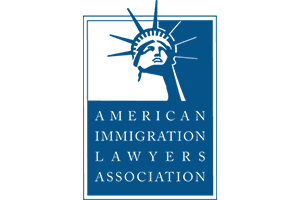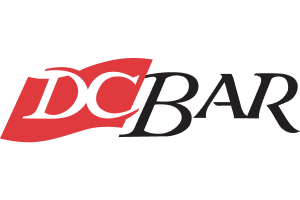Small Law Firm Care & Attention"
Tort Reform
This is in response to the article in Sunday November 14, 2004’s opinion section where the President of Johns Hopkins University, William Brody, purportedly exposes “myths” of tort reform, but instead merely perpetuates a number of myths which are perpetrated by the insurance and medical industries. Just as there are self-evident truths, there are self-evident falsities.
Mr. Brody attempts to scare vulnerable patients into thinking that his agenda and the agenda of insurance companies is in their best interests when nothing could be further from the truth. For example, Mr. Brody states that poor investing by insurance companies has not caused an increase in malpractice premiums, but this itself is a myth. Mr. Brody makes no reference to facts or statistics, which buttresses his boldfaced argument that there is a link between jury awards and medical malpractice premiums. As Abraham Lincoln would say, “This is nothing but a living, creeping lie.” (See Final Lincoln/Douglas debate)
Facts can be a stubborn thing, I get that, but that does not justify Mr. Brody’s dissemination of misinformation. In fact, his article indicates his industry’s thirst to avoid accountability and responsibility for the consequences of failing to uphold the proper standard of care. Don’t we all wish we could get a free pass for those bad days in the office.
Tort reform has become a hot issue in Maryland recently with Governor Robert Ehrlich seeking to limit the recovery for the most seriously injured victims of medical malpractice. The purpose of this written is to illustrate how Governor Ehrlich’s concern is misplaced and misapplied. We should be more concerned about the victims of malpractice rather than those who caused the malpractice. Our Governor Ehrlich’s push for “tort reform” shows a distrust of the jury, the fundamental foundation of our Constitutional system. Governor Ehrlich’s desire to further limit of attorney’s fees is not motivated by a concern for the victim, instead the motivation lies with allowing insurance companies and negligent doctors to operate at the lowest cost possible by reducing the motivation and quality of the opposing counsel. Attributing costs of health care visa vis “defensive” medicine is not scientific. On that point, my opponent is fighting a straw man. You are not going to hear me argue against that.[1] Doctors are more concerned with licensure and revocation than the well being of their patients, which leads to doctors practicing defensive medicine. Given that the total cost of Medical malpractice Lawsuits is less than 2% of that total healthcare system.
Governor Ehrlich and his tort reform proposal succumb to greed. Minnesota ranked 36th nationally in payments to victims of medical negligence in 2000, with payouts of approximately $19 million. The CEO of Minnesota based United Health Care Group received over $58 million in compensation that same year. That means that United Health Care Group paid its CEO more than three times the amount it paid out in all medical negligence claims.[2]
The masters of Machiavellian manipulation are up to their old tricks and the public has a right to know. The reason malpractice insurance premiums for are so “high” is because insurance companies are poorly managed, invested in the market (when the market drops, so does the insurance companies’ earnings and value), greedy, and not regulated well enough. For example, at the same time they complain of high malpractice verdicts, many insurance companies are paying more for CEO bonuses than they are in malpractice verdicts. This is why many physicians’ premiums are increasing, shifting the onus onto the backs of the injured and/ or their next of kin would be morally and intellectually wrong.
Regardless of what some politicians and the insurance industry claim, malpractice damage awards are not the reason for the increase in malpractice insurance rated. Very little malpractice actually is litigated. The award amounts constitute only a very small fraction of the healthcare industry’s total expenditures. Insurance company payouts for the first six months of 2004 increased by only 12% compared to the same period for 2003 even though insurance premiums increased by 41%.[3]
The Politicians try to pull the wool over our eyes by called these cases “frivolous lawsuits.” That is a myth. Lets not forget in malpractice litigation, cases still require expert doctors to first certify under oath that there was malpractice committed. Without doctors testifying against other doctors in the same field, malpractice cases would not even get to trial.
According to the American Insurance Association (AIA), malpractice insurance rates are not expected to go down even if tort reform is enacted “the insurance industry never promised that tort reform would achieve specific premium savings”[4] They do not make any such promises here and now in Maryland.
Malpractice damage awards constitute only a miniscule fraction of the total health care spending in this country. According to a January 8, 2004 Congressional Budget Office brief:
Savings [from capping medical malpractice damage awards] would not have a significant impact on total health care costs, however. Malpractice costs amounted to an estimated $24 billion in 2002, but that figure represents less than 2 percent of overall health care spending. Thus even a reduction of 25 percent to 30 percent in malpractice costs would lower health costs by only about .4 percent to .5 percent, and the likely effect on health insurance premiums would be comparably small.[5]
In fact, according to a March 5, 2003 article in USA Today, doctors pay less for malpractice insurance than they do for rent. These claims represent a very small portion of the total expenditure and are not the place for the industry to focus its attention if it wants to reduce premiums.
Very few malpractice claims are even filed. “For every 8 instances of malpractice, only 1 claim was actually filed.”[6] That means that a great deal of doctors who commit malpractice are never held accountable for the damage they do. Of the malpractice cases filed, “Only 26% of malpractice cases tried result in an award for the plaintiff, that’s the lowest win rate for any tort, personal injury claim.”[7] Even when claims are brought forward, they are difficult to win. The doctors who lose these cases deserve to be held accountable and their patients deserve to be compensated for their injuries. Governor Ehrlich seeks measures that will limit the accountability, responsibility, consequences, and choices of doctors and give them an unjust advantage over their victims. No one, not even doctors, are above the law.
The U.S. Courts are overloaded, but not because of medical malpractice claims. The vast majority of cases in the court are in 2 areas (i) Case brought by the government it self; and (ii) family law divorce cases. From the time between 1996 and 2002, in Maryland, at a time when medical malpractice premiums rose dramatically, claims against doctors dropped by 11.8%.[8]
Even when malpractice cases are brought and reach a jury and patients win an “astronomical award or payout” as reported in the news, they are almost always reduced by the trial judge or later on appeal. According to National Practitioners Databank, in 2000, the median malpractice payout was $125,000. Such a figure hardly compensates someone for serious, life altering injury such as the permanent loss of a limb etc. A recent report by Americans for Insurance Reform Institute reveals that, over the last 30 years, medical malpractice premiums have directly followed the ups and downs of the economy.
Putting caps on malpractice awards will not decrease insurance premiums. In Nevada, the legislature put a $350,000 cap on malpractice awards. Shortly afterward, Nevada’s three principle malpractice insurers announced rate increases of 17% and 93%.[9] How can that account for the insurance companies claim that malpractice claims have run them into the ground? California instituted a $250,000 cap on medical malpractice claims in 1975. Over the next 13 years, their medical malpractice insurance rates went up more than 450%.[10] In 1991, Washington’s insurance commissioner, Dick Marquardt, concluded in a report that it was “impossible to attribute stable insurance rates to tort-law changes or the damages cap,” since rates also improved in states that did not pass tort reform.
These caps apply to real injuries that are not fully compensated at the $250,000 mark, such as loss of limb, sight, mobility, fertility, excruciating pain, severe disfigurement, even the death of a child or spouse. Doctors and their insurance companies should be held accountable for inflicting such serious injuries. To these multimillion dollar companies, a $250,000 judgment means nothing. A $250,000 judgment may not fully compensate these injuries and it surely will not create a disincentive to the doctors or the insurance companies.
Here is the bottom line, Insurance companies invest their dollars in the U.S. market. When the market does poorly, so do the insurance companies. Poor investing and mismanagement have caused indeed rate hikes. Insurance premiums for doctors have skyrocketed three times in the last 30 years; in the mid 70’s, mid 80’s, and now today. The cause is always the same: a severe drop in investment income for insurers compounded by pricing errors in previous years.[11] In response there inclination is to immediately blame the victim the milk their cash cow, the medical malpractice premiums.
Interestingly, while the malpractice insurers are crying wolf, total profits as a percentage of premiums for 1999 are nearly twice as high in the medical malpractice lines than the casualty and property insurance industry average (14.2% v. 8.2%).[12] What entitles the malpractice insurers to profits that dwarf those of the other insurance industries?
The best way for doctors and insurance companies to reduce the amount and cost of litigation is to be fair, caring and honest when dealing with their patients. When a Veteran’s Administration Hospital began to promptly and fully disclose all errors and offer fair compensation, litigation costs went down.[13] Patients appreciate honesty and integrity; unfortunately those qualities are often found lacking in the insurance industry. If doctors and insurers stopped playing games and were open, honest, and fair with patients, insurance costs likely would drop.
The real problem with medical malpractice is medical malpractice. Up to 98,000 patients die each year from preventable medical errors. That’s 268 people per day.[14] Thus, relatively few doctors are responsible for a disproportionately large number of claims. For example, in West Virginia, just 40 doctors account for more than 25%, nearly 2,300 cases of medical malpractice claims reported to the West Virginia Board of Medicine since 1993.[15]
The insurance companies are greedy and quick to blame others for their internal problems. If Governor Ehrlich’s tort reform passes, CEOs of insurance companies stand to make even more money. If insurance companies genuinely want to increase profits or reduce premiums, they should consider cutting the pay of their CEOs, other top officers, and overhead. The president of John Hopkins must be motivated to protect his almost $900K annual salary. Not bad for a teacher huh?
“Tort reform” leads to additional taxpayer costs associated with expanding welfare and Medicaid costs. Injured parties are often in low-income brackets to begin with. If the victim cannot recover from the insurance companies, the victim has no alternative but to shift the burden to public assistance through welfare, Medicaid, and food stamps. Medical bills can devastate people, and for the estimated 44 million uninsured Americans it can mean welfare and Medicaid. The insurance companies are more than delighted to shift their responsibility towards the pockets of the General Public. Lets not fall for that like sheep.
The only thing tort reform helps is insurance companies, i.e. corporate welfare. Gov. Ehrlich’s plan will not help doctors. It will not decrease malpractice premiums. His plan will hurt individuals who are harmed by the practice of bad medicine who will not be fully compensated for the debilitating injuries they receive. Maryland’s “tort reform” will hurt the taxpayers because they will be forced to support more people on disability and welfare programs.
Ultimately, Maryland needs to adopt remedies to this situation. One remedy that the Maryland Trial Lawyers Association favors is the idea of a state fund.[16] Senate President Thomas V. Mike Miller Jr. (D-Calvert) is creating legislation that would help insurance agencies pay damages in cases after they exhaust the money they have collected in premiums from doctors. Then, the insurers could freeze rates at or near the current level.[17] In the end, “tort reform” is hurting innocent people who are victims of doctors’ malpractice.
Sincerely,
A.P. Pishevar, Esquire
[1] Red Henning, Statesman
[2] Minnesota Consumer Alliance.
[3] John Wagner, “33% Increase Approved for Maryland Doctors’ Premiums,” Washington Post, Sept 15, 2004.
[4] (March 13, 2002).
[5] Congressional Budget Office Brief, January 8, 2004.
[6] The Harvard Medical Study Practice Group, Patients, Doctors, Lawyers: Medical Injury, Malpractice, Litigation, and Patient Compensation in New York Harvard University, 1990.
[7] See Bureau of Justice Statistics Report published August 2000.
[8] Maryland Office of Health Claims Arbitration
[9] Foundation for Taxpayer and Consumer Rights.
[10] Foundation for Taxpayer and Consumer Rights.
[11] Americans for Insurance Reform.
[12] National Association of Insurance Commissioners.
[13] Risk Management: Extreme Honesty May be the Best Policy (Annals of Internal Medicine Vol. 131, # 12, Dec. 21, 1999).
[14] To Err is Human: Building a Safer Health System (National Academy Press).
[15] Lawrence Messina, “Malpractice Claims Have Decreased: Study’s Findings Run Counter to Medical Association Allegations” Sunday Gazette Mail, Feb. 25, 2001.
[16] John Wagner, “33% Increase Approved for Maryland Doctors’ Premiums,” Washington Post, Sept 15, 2004.
[17] John Wagner, “33% Increase Approved for Maryland Doctors’ Premiums,” Washington Post, Sept 15, 2004.













